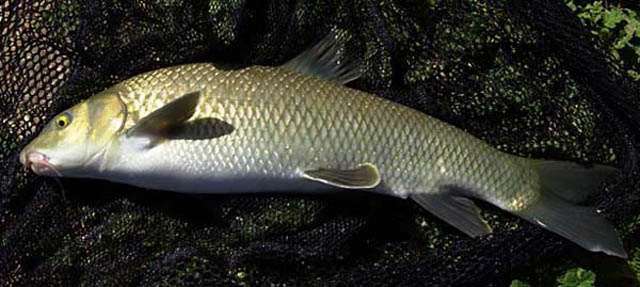| Cyprinidae (Minnows or carps), subfamily: Barbinae |
| 50 cm SL (male/unsexed); max. reported age: 7 years |
|
benthopelagic; freshwater |
| Europe: Spain in streams draining to Mediterranean, between Vinalopo and (but not including) Ebro drainages, and in a few headwaters of Guadiana drainage. |
|
Diagnosed from other species of Barbus and Luciobarbus in Iberian Peninsula by having the following characters: lateral line with 45-49 + 3 scales; last simple dorsal ray slender, serrated posteriorly in juveniles, not serrated or only with very weak serrae in adults; posterior barbel not reaching posterior margin of eye; lower lip without median lobe; and lower jaw tip exposed, not covered by lower lip (Ref. 59043). |
| Occurs in water bodies of low-lying plains, with little current (Ref. 26100). Most common in the middle and lower reaches of rivers. Moves upstream stretches during spawning season (Ref. 59043). Threatened by pollution, habitat destruction and introduction of new species (Ref. 26100). Attains maximum size up to about 50 cm SL and lives up to at least 7 years (Ref. 59043). |
|
Vulnerable (VU); Date assessed: 31 January 2006 (A3ce) Ref. (130435)
|
| harmless |
|
Source and more info: www.fishbase.org. For personal, classroom, and other internal use only. Not for publication.

